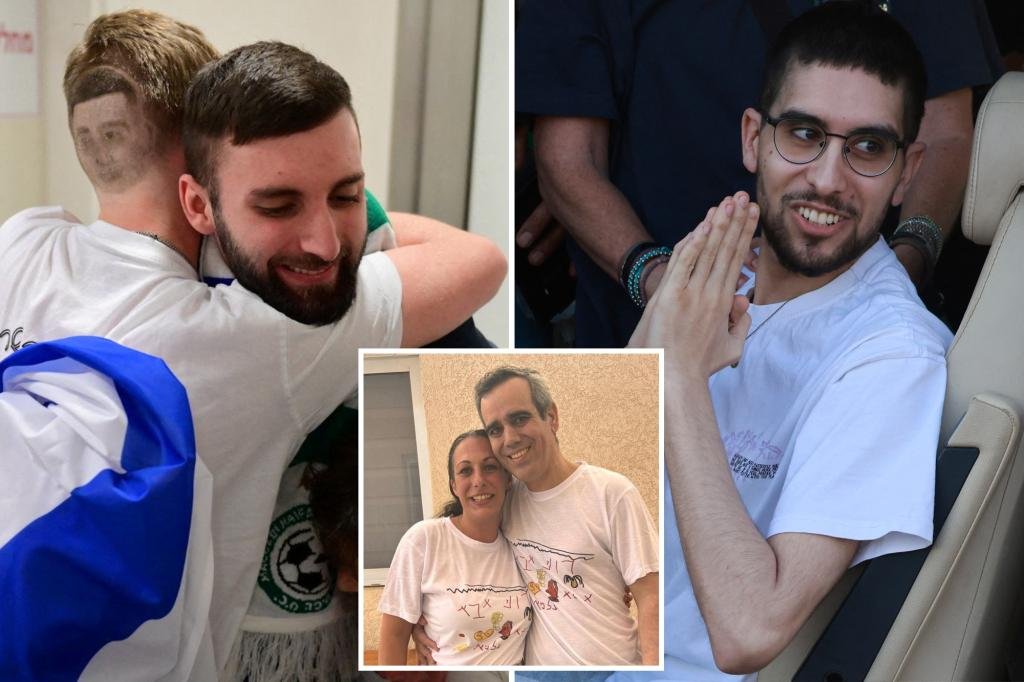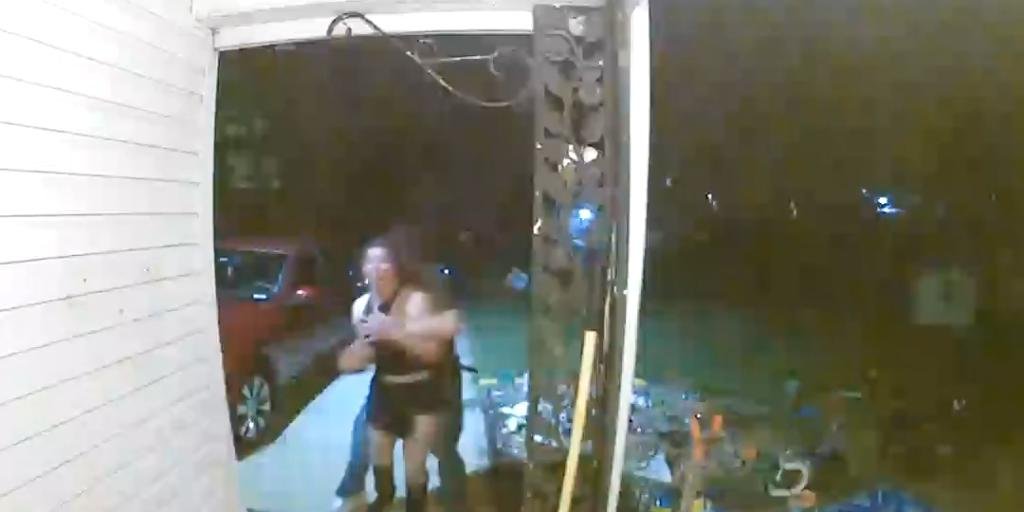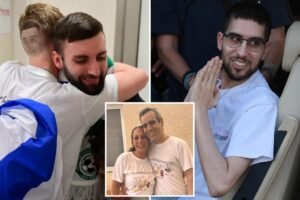
Released Israeli hostages detail brutal beatings, starvation and years spent underground in Hamas captivity.

The mother of liberated Israeli soldier Matan Angrist said that her son was beaten so severely by his Hamas captors that he lost consciousness – in One of many terrifying accounts Emerging since the release of 20 hostages alive The peace agreement between Israel and Hamas this week.
“He remembers being beaten so badly that he lost consciousness,” Anat Angrist told local media in Israel as she described her son’s ordeal after his kidnapping on October 7, 2023.
“They covered him with black bags and dragged him away,” she told Haaretz.
Angrist, an IDF soldier who was taken from his tank near Gaza, told his family that during the air strikes, the walls of the tunnels collapsed around him.
“Often they found themselves buried in dust under the rubble, trying to climb out and survive,” his mother said.
She added that during the last four months of captivity, he was detained in a dark tunnel.
Many of the released hostages – among them Ariel Cuneo and Rom Braslavski – remained in complete isolation. Haaretz reported.
Kunio told the Israeli public broadcaster Kan that he spent the entire period of his captivity alone, not knowing for several months that his brother David and his partner Erbil Jews were still alive.
Braslavsky, 21, was also held alone and told relatives he was starving, shackled and forced to sleep barefoot on cold ground.
The survivors said that Hamas guards ate food in front of them while they were suffering from hunger.
“The treatment became harsher when the Israeli army resumed ground operations in March.” Kahn reported.
Channel 13 News said that the hostages were never given shoes and that some of them remained constantly chained.
Alon Ohel’s parents said their 24-year-old son had been transported through tunnels in Gaza until several weeks ago, when he was moved to act as a human shield.
His parents told Channel 12: “They suddenly transferred him to another tunnel in central Gaza.”
“The IDF announced an operation to seize Gaza City, and they transferred him to use as a human shield.”
O’Hale and other hostages were held underground for months at a time, deprived of daylight and basic sanitation. When Hamas released videos during the war showing Ohel and his fellow captives, his relatives said his face was emaciated and his hair was cut short — signs of prolonged malnutrition.
In a Separate account published by YnetOmri Miran, 48, from Kibbutz Nahal Oz, told relatives that he counted each of the 738 days he spent in captivity, moving between 23 different locations throughout Gaza.
His brother, Nadav Miran, said: “He was detained in a tunnel and above the ground.”
“Sometimes he would cook food for his captors, and they loved his cooking.”
Nadav said his brother mentally calculated every day.
“He knew exactly what history was,” he said. “He didn’t write it down, he kept track of it in his head.” Nadav added that the hostages spent most of their time “playing cards with their captors.”
Despite the ordeal, Omri said his sense of humor and cognitive health remained intact.
“He looks pale, but his sense of humor is the same,” Nadav said. “It’s like he never left.”
Avishai David, the father of the released hostage Eviatar David, said his son was still weak and underweight after being hungry for several months.
“Even after the video that shocked the entire country, his kidnappers continued to starve him,” he told Ynet.
He said that shortly before his release, Hamas guards began feeding him a slightly larger amount than usual.
“He realized they were trying to make him fat, so he ate slowly and carefully,” Avishai said.
“He’s still weak and skinny, but he’ll be fine. He’s starting to eat.”
Eviatar, 24, and his friend Guy Gilboa Dalal were kidnapped together from the Nova Music Festival. They were separated for six weeks during captivity but were reunited this week in an emotional embrace in hospital.
Their families said in a joint statement reported by Israeli media: “From the first moment, we knew that he would return.”
In footage released by Hamas in August, Eviatar appeared emaciated, his ribs visible, as he said: “I am not eating; there is hardly any water.”
The men were among 20 surviving hostages released on Monday, two years after the Hamas attack on October 7, 2023, under a US- and Egyptian-brokered ceasefire and prisoner exchange agreement.
In return, Israel released about 2,000 Palestinian prisoners and the remains of about 360 Palestinians, according to international observers.
The Red Cross supervised the transfers, which took place amid a broader plan to stop the fighting, withdraw Israeli forces from parts of Gaza, and flood the Strip with humanitarian aid.
Under the agreement, Hamas must disarm and allow an international stabilization force to secure Gaza while the reconstruction process begins.
All 20 released hostages were transferred to hospitals throughout Israel to receive medical and psychological care. Doctors at medical centers in Beilinson, Sheba and Suraski said many suffer from severe malnutrition, respiratory infections and skin diseases resulting from spending years in dark and damp tunnels.
The families said the former prisoners remained fragile but lucid.
Nadav Miran said about his brother Omri: “He is strong in spirit and mind – and we are happy to have him back.”
Doctors expect recovery to take months. The men are on a restricted diet to prevent refeeding complications and remain under close psychiatric supervision, hospital officials said.
For families, the reunions provided relief mixed with sadness. Some relatives of the dead hostages have not yet received the remains of their loved ones, as stipulated in the agreement. Israeli officials said they were pressuring Hamas to comply fully.













Post Comment